Samsung OLED 48 S90D or S94D is the smallest model in this series, and we had the opportunity to see what it can do. At first glance, it's evident that it deals excellently with details in dark scenes, as is expected from an OLED. However, it is worth mentioning that the 48-inch version differs from the larger models. Brightness is slightly lower, and the panel has a satin finish instead of glossy. During the day, this may affect the perceived image. Nevertheless, regardless of the variant, OLED always makes an impression. The depth of black is incredible, and the contrast ensures that even the most demanding scenes look cinematic. When it comes to high-quality materials, the television literally shines here – bright elements in dark frames literally pop out of the screen. The factory colour settings could be better, but after calibration, the television showcases its full potential. While watching from different spots in the room, we noticed that wide viewing angles make a difference – the image remains clear and full of detail, even when viewed from the side. The Tizen system proved convenient to use – applications like Netflix and Prime Video were within easy reach. A few less popular applications were missing, which could be a downside, but it wasn’t a problem for us. The interface itself ran smoothly without any hiccups. During sports and dynamic movie viewing, the television showed what it’s capable of. The 144 Hz panel eliminates motion blur, and fast actions are displayed smoothly and without interruptions. What is gaming like on this television? It's simply a pure pleasure. Low input lag and support for 144 Hz made every gaming session responsive and smooth, regardless of whether we were playing fast-paced FPSs or calmer strategy games. Samsung OLED 48' S90D/S94D is a great choice for those looking for a smaller television with excellent picture quality and additional features for gamers. It's not without its compromises, but it performs really well in everyday use. For us, it's a compact piece of equipment that proves that size doesn’t always matter.
- Matching (Score)
- Our verdict
- TV appearance
- Where to buy
- Contrast and black detail
- HDR effect quality
- Factory color reproduction
- Color reproduction after calibration
- Smoothness of tonal transitions
- Image scaling and smoothness of tonal transitions
- Blur and motion smoothness
- Console compatibility and gaming features
- Input lag
- Compatibility with PC
- Viewing angles
- TV efficiency during daytime
- Details about the matrix
- TV features
- Apps
- Playing files from USB
- Sound
Samsung S90D / S94D 48" (WRGB OLED) vs Hisense E8Q
Direct compare
S90D / S94D
E8Q
Available screen sizes: 48”

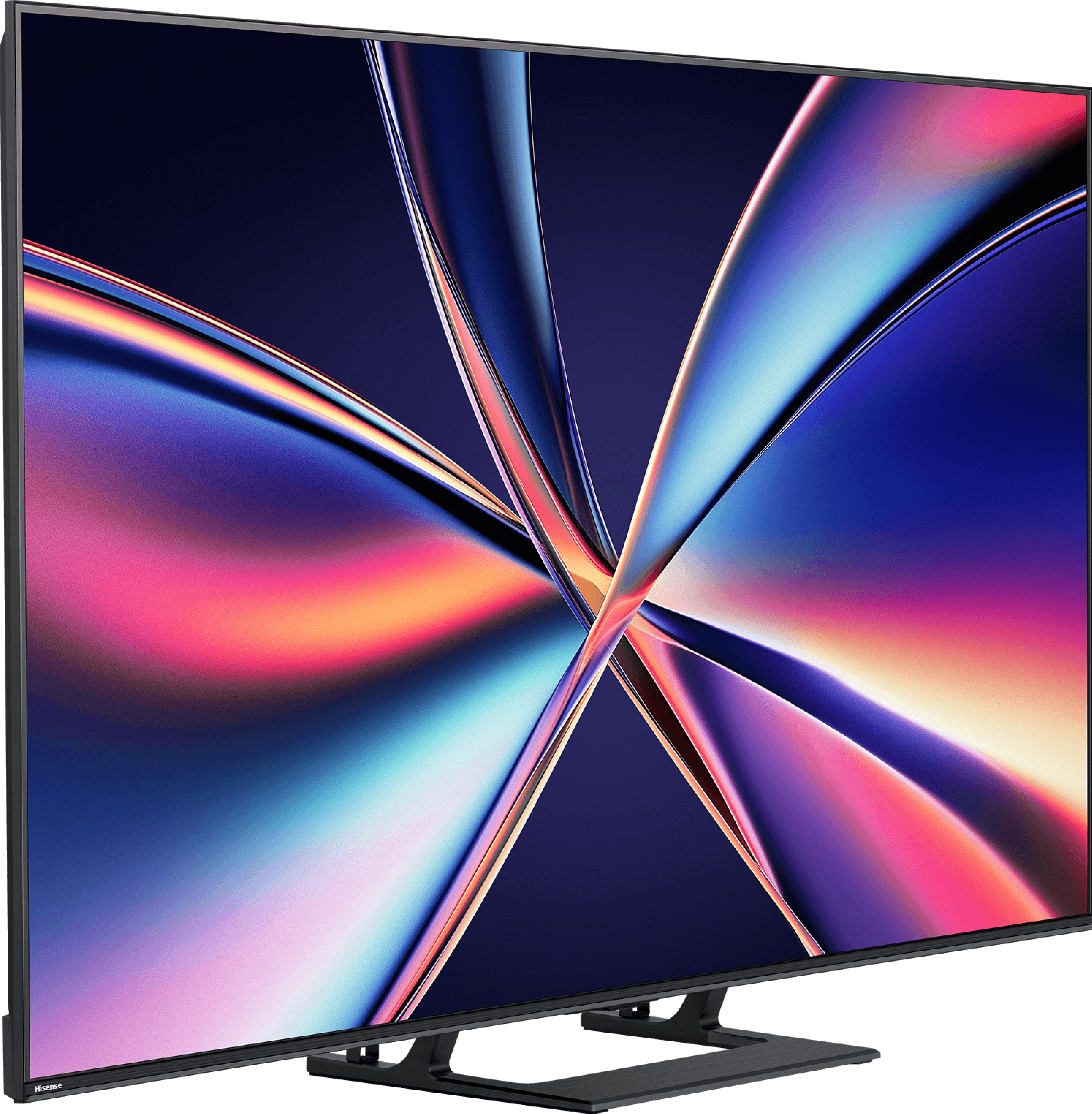
Panel type: WRGB OLED
Resolution: 3840x2160
System: Tizen
Model year: 2024
Complete the survey to find out the result

Panel type: LCD VA
Resolution: 3840x2160
System: VIDAA
Model year: 2025
Complete the survey to find out the result

Overall rating
7.9
7.0
Movies and series in UHD quality
8.0
6.7
Classic TV, YouTube
8.6
6.8
Sports broadcasts (TV and apps)
8.4
6.5
Gaming on console
9.4
8.0
TV as a computer monitor
8.6
8.6
Watching in bright light
5.4
6.2
Utility functions
7.7
8.9
Apps
8.7
7.7
Sound quality
6.8
5.5
Complete the survey to find out what fits your preferences
Advantages
Perfect black
Great for 4K HDR content
Excellent for gamers - 144hz, HDMI 2.1, low input lag.
Advanced and fluid Tizen system
Multifunctional solar remote control
Great contrast and deep blacks
Very good fluidity of tonal transitions (close to reference level)
High brightness
Support for 4K 144 Hz and even 240 Hz in Full HD
VRR, ALLM, G-SYNC – a complete package for gamers
Low input lag
Many classic television features integrated into the VIDAA system
Disadvantages
Inferior brightness compared to larger equivalents
Lack of Dolby Vision and DTS:X
No support for HGiG (makes setting up HDR on consoles difficult)
Poor viewing angles – typical for VA panels
Closed VIDAA system – lacks some applications
Inferior sound quality compared to the twin model U7Q
Our verdict
The Hisense E8Q is a television that clearly draws heavily from the U7Q model – and very well so. After all, it is his European version, not another "slimmed down" mutation. Just moments with this screen reveal that the E8Q is putting up a fight. And in many respects, it really succeeds. To start with – what impresses: the blacks are deep, the contrast is high, and the brightness exceeds a level we can simply call satisfactory. Add to this almost perfect fluidity of tonal transitions and we have an image that looks very mature, especially for this price segment. In gaming? Just as good. Support for VRR, ALLM, 144 Hz in 4K and even 240 Hz in Full HD – it's hard to nitpick here. Well… almost. Because the E8Q has one additional flaw compared to the U7Q – sound. In our unit, even at moderate volume levels, the back of the casing began to resonate, generating rather unpleasant crackles. This could be a fault of the test unit, but since the U7Q simply performed better – it’s worth noting. Especially if you find both models at a similar price. We can confidently say that the E8Q is a television that can boldly compete for the attention of those seeking a quality Mini-LED at reasonable prices. If a good price opportunity arises, it is simply worth it – because we get almost the same as in the U7Q. And that means a really solid picture, great gaming features, and overall a very good piece of equipment that one can stick with for a longer time.
TV appearance







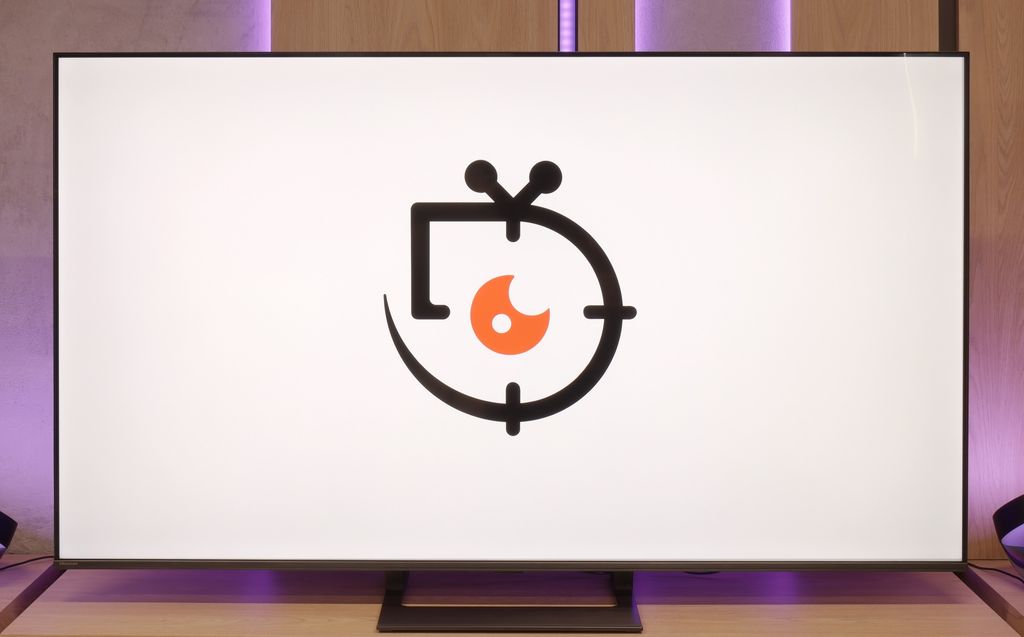
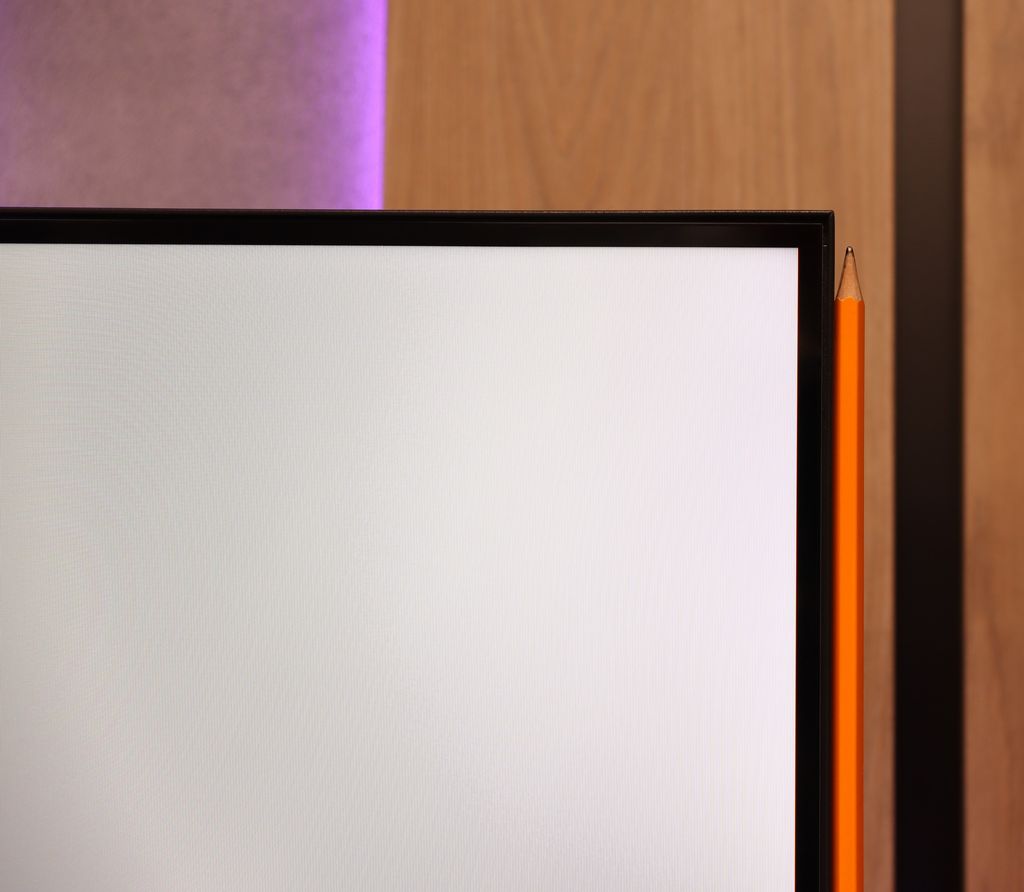
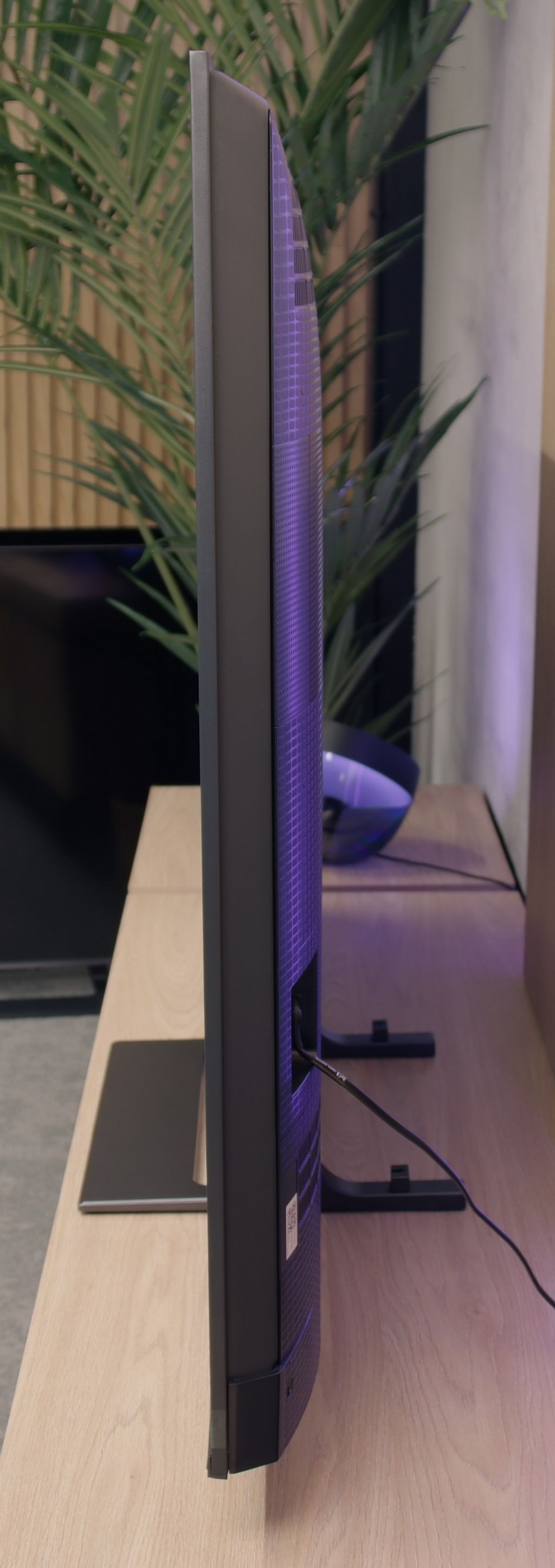
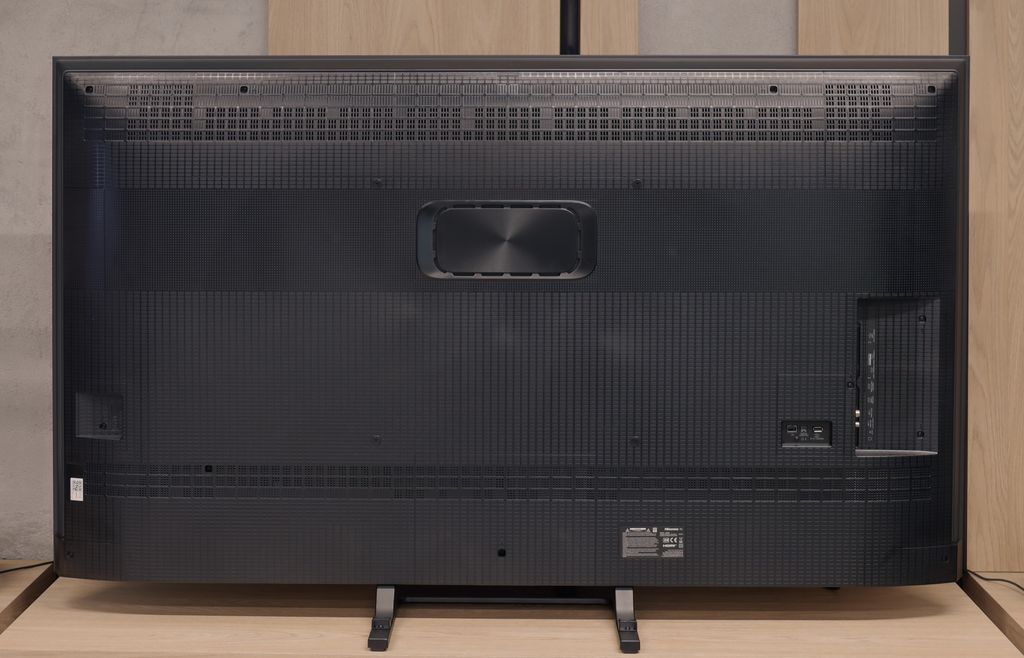
Contrast and black detail
10/10
7.6/10
Local dimming function: Yes, number of zones: 220 (10 x 22)
Contrast:

Result
∞:1

Result
∞:1

Result
∞:1

Result
∞:1

Result
∞:1

Result
277,000:1

Result
43,700:1

Result
15,750:1

Result
8,850:1

Result
6,350:1
Halo effect and black detail visibility:

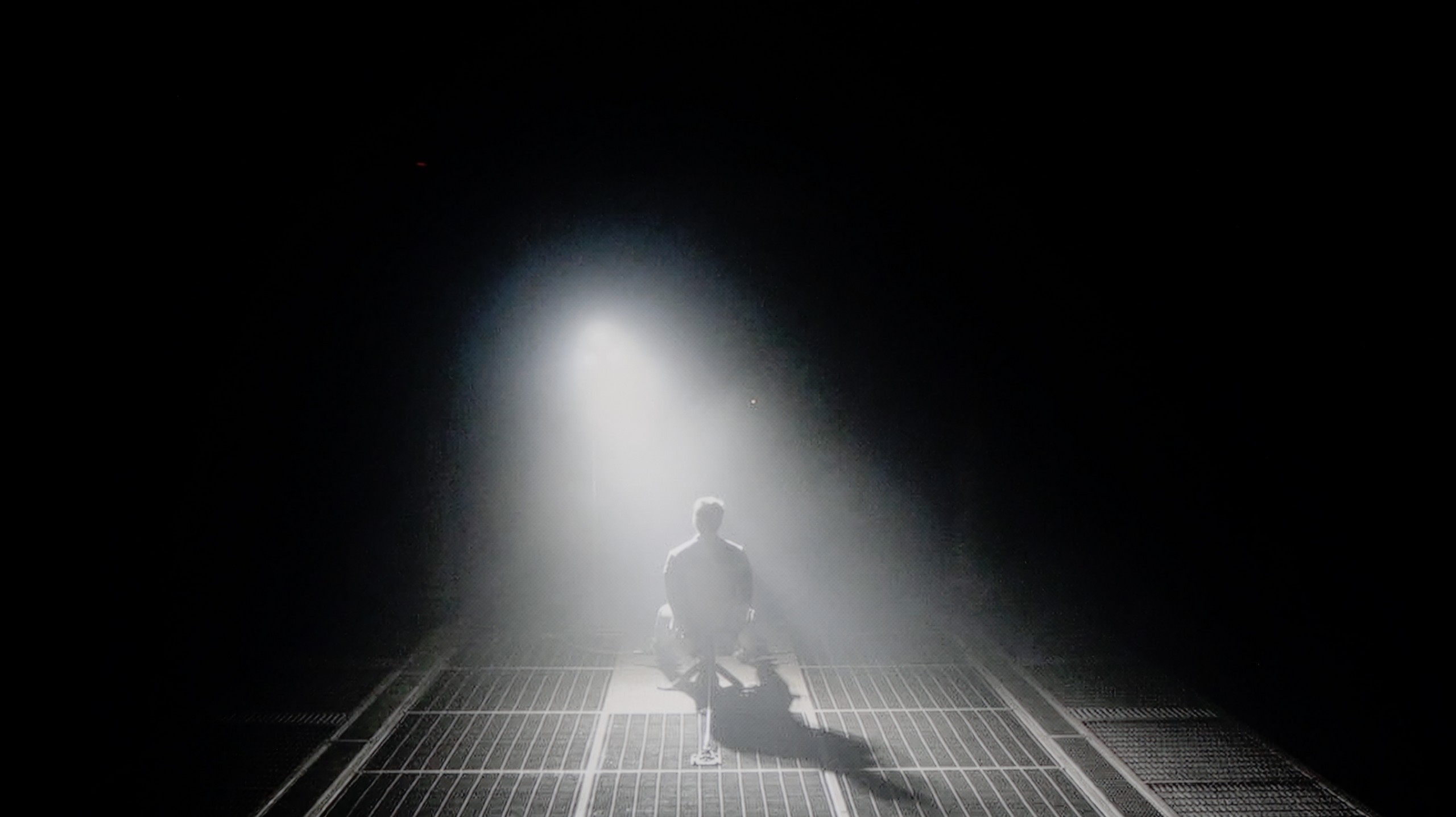
Samsung OLED 48 S90D stands out due to its use of OLED technology, which provides an extremely high contrast, one of its key advantages. OLED technology allows each pixel to emit light independently, resulting in perfectly deep blacks and excellent visibility of details even in the darkest scenes. Unlike traditional LCD screens with backlighting, where blacks can appear blurred and greyish due to uneven illumination, OLED ensures that pixels are completely turned off in areas where black should appear. As a result, contrast reaches an impressive level, and images become more vibrant and realistic. An example can be seen in a scene from the film “Oblivion,” where the S90D effectively captures the intense light of the lantern, highlighting the details in the bright areas of the image. In “Sicario 2,” the OLED panel accurately reproduces the helicopter lights against a dark background.
Similar to the U7Q, the E8Q model uses a VA panel and Mini-LED backlighting. The number of dimming zones also remains at a very similar level – in the 65-inch variant we tested, we counted 220 zones, which is exactly the same as in the U7Q. On paper, this looks really good for this price segment, but even better – in practice. The contrast is high, and the black can be really deep. In many scenes, the lights are clearly separated, and the image gains a sense of depth. This is one of those cases where Mini-LED shows that it can approach the quality of OLEDs – of course, assuming that we understand the limitations we have to contend with. In very challenging scenes, there may be slight brightenings or a small halo effect around bright objects, but these phenomena are typical of this technology and do not stand out strongly. Ultimately – the contrast and blacks in the E8Q are really solid, almost identical to those in the U7Q model. It’s hard to find anything to criticise here, especially when we consider the price of the television.
HDR effect quality
6.4/10
4.5/10
Luminance measurements in HDR:

Result
788 nit

Result
807 nit

Result
851 nit

Result
838 nit

Result
372 nit

Result
531 nit

Result
148 nit

Result
320 nit

Result
100 nit

Result
625 nit
Scene from the movie “Pan” (about 2800 nits)


Scene from the movie “Billy Lynn” (about 1100 nits)


Static HDR10


Dynamic: HDR10+
Dynamic: Dolby Vision


HDR luminance chart:
Hisense E8Q
Luminancja HDR
Luminance of RGB colors
Samsung S90D / S94D 48" (WRGB OLED)
Luminancja HDR
Luminance of RGB colors
In the tested film scenes, the television Samsung OLED 48 S90D achieves impressive brightness results, surpassing 800 nits in the first four shots, which can be considered a very good result. In the case of the final shot, where a fullscreen flash of sunlight is visible, the brightness drops to around 400 nits, but still remains at an acceptable level. However, it's worth noting that this model in larger sizes offers higher values, exceeding the "barrier" of 1000 nits. Additionally, speaking of the DCI-P3 colour space coverage at 97% is an excellent result, which guarantees extremely rich and realistic colour reproduction, further enhancing image quality. However, once again it should be remembered that the panel in the 65' variant equipped with a QD-OLED panel will be even better in this aspect. For those hesitating in choosing the size of the S90D model, it is worth mentioning that the larger versions of this television offer better HDR effects, and consequently, higher scores in our tests.
Since the E8Q is a twin of the U7Q, it’s no surprise that the quality of the HDR effect is nearly identical. On paper, it looks promising – a peak brightness of 800 nits can impress in many scenes. Moments such as flashes of light in “The Meg” or shots of the sun in “Life of Pi” can indeed evoke a 'wow' effect. But the longer we watch, the more we notice the limitations. The problem arises when small, bright details need to be shown against a dark background. In such situations, the dimming algorithms try to preserve contrast but end up dimming what should shine the most. Instead of dazzling details, we get almost invisible points of light. This is typical for Mini-LEDs in this price segment and is not surprising – but it’s worth knowing that the HDR effect will not always be fully preserved. Fortunately, the colour performance offers reasons to be pleased. Coverage of the DCI-P3 colour gamut at around 94% is a very good result, and the applied layer of quantum dots (more precisely, PFS) does its job – the colours are saturated and vibrant, especially with 4K content.
Factory color reproduction
7/10
6.5/10


Factory Mode
After calibration
The S90D Samsung television has been tested in Filmmaker mode, which offers good colour reproduction, although with some imperfections that may be noticeable to more demanding users. This mode can seem overly warm, and users switching from Standard mode may experience a slight shock. It's worth noting that this state of affairs is caused by poor settings, such as in the white balance, rather than the Filmmaker mode itself. In both SDR and HDR content, the device shows drops in blue, causing colours to become warmer than they should be. In practice, this means that some shades, such as sky blue or skin tones, may appear less natural and more tinged with pink or yellow. The Colour Checker test confirms these deviations, showing shifts towards warmer tones. In SDR content, the gamma graph indicates slight fluctuations, causing the image to be minimally darker, especially in shadows. This may affect less distinct details in darker scenes. Conversely, in 4K HDR materials, the EOTF curve is situated above the recommended line, leading to some parts of the image being displayed too brightly, which can cause clipping in the brightest areas. Overall, the Samsung S90D presents a solid image right out of the box, but for the best results, especially with more demanding content, additional calibration is recommended.
Testing the Hisense E8Q in Filmmaker mode, we were hoping for a possibly neutral image close to the director's vision. Unfortunately – although it doesn't look bad on paper (the colour reproduction errors are not significant), in practice the image appears not entirely natural. The reason? An overly strong boost in blue colour and a lack of red in the white balance. The effect? Scenes look cool, and the white seems slightly bluish. Alongside the U7Q model, we also noticed a specific approach to brightness management here. The brightness mapping curve for HDR content (EOTF) shows that the television can significantly dim small, bright elements on the screen to maintain contrast – but sometimes it goes too far in this. On the other hand, larger, very bright areas can be excessively brightened, which disrupts tonal balance. This is a compromise that may not suit everyone – especially if you want an as faithful image as possible right out of the box.
Color reproduction after calibration
8.7/10
7.4/10



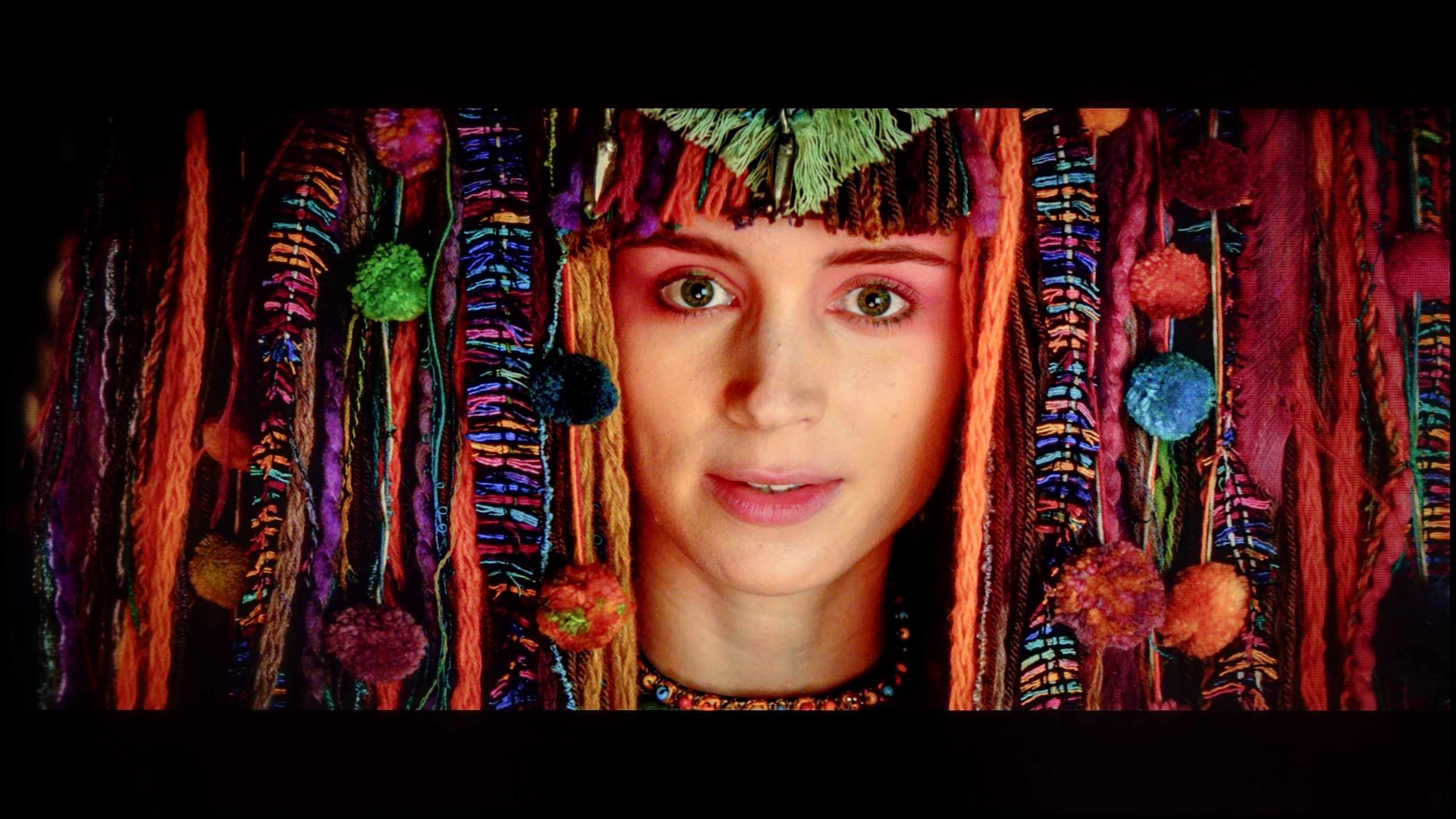
After calibration, the television Samsung OLED 48 S90D in film mode looks even better than one could have presumed. The white balance, for both HD and 4K HDR content, has been improved to nearly perfection. Although minor errors can still be noticed, they are so minimal that they do not significantly affect the quality of the image. The colours are more balanced, which translates to a natural representation of details, particularly in scenes requiring a precise colour palette. It is worth adding that this model in the 48' size is equipped with a WOLED panel that has a different characteristic compared to larger sizes and has a smaller coverage of a wide colour gamut, not offering such rich colours as, for example, the 65-inch version, which is fitted with a QD-OLED panel.
The contrast has also undergone significant improvement. The gamma graph after calibration is much closer to the expected line, providing a better balance between the bright and dark parts of the image. The EOTF curve, which before calibration showed issues with overexposed scenes, now displays better results. This effect allows for greater detail preservation in the bright parts of the image, especially in HDR material.
The calibration of the Movie mode yielded really good results, especially when it comes to SDR content. We managed to balance the white levels, which made the image look more natural – it appeared almost reference-quality. The colours were well-saturated, and the overall perception of the content improved significantly. Unfortunately, when we switched to HDR materials, familiar issues from the U7Q model returned. The television still likes to "do its own thing," as evident from the analysis of the brightness characteristic EOTF – despite calibration, the E8Q still dimmed fine details in the shadows, while the bright areas of the screen could be excessively boosted. In practice, this means that in darker scenes, some of the smallest details could simply disappear. Although it must be acknowledged that the entire calibration process brought a lot of good, not everything can be circumvented – even with the use of professional tools. The E8Q can impress with its picture, but in HDR content, its design limitations become apparent, and it is worth keeping this in mind.
Smoothness of tonal transitions
7.6/10
9.9/10





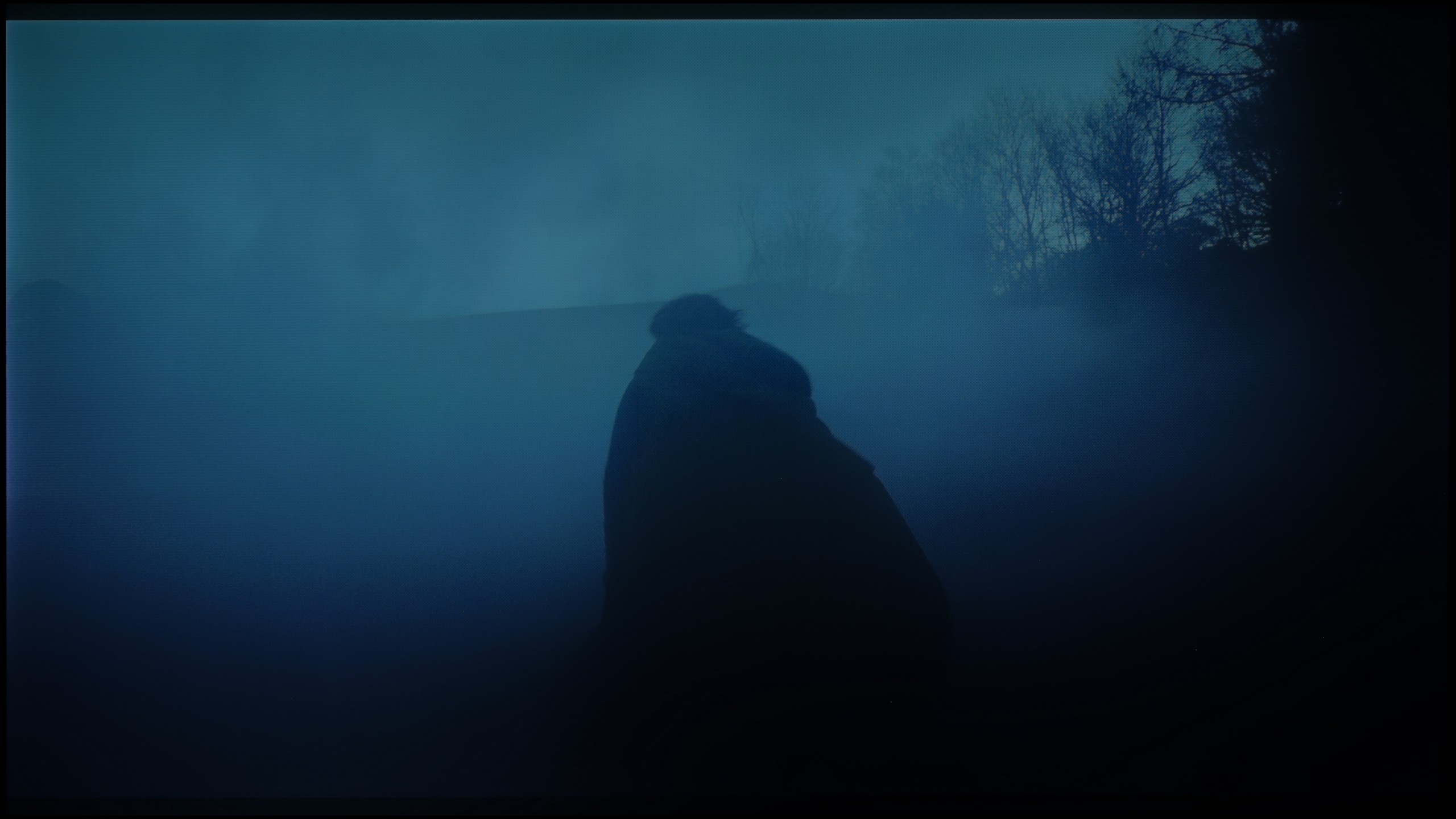






The fluidity of tonal transitions on the Samsung OLED 48 S90D television is at a good level, although subtle imperfections are visible in places. In most scenes, the tonal transitions are smooth and well-rendered, providing a natural viewing experience. In more demanding sequences, such as a darkly coloured sky, slight issues may arise; however, these do not significantly affect the overall visual experience. In the test scene dominated by red hues, slight clipping of the brighter areas can be observed, but it is subtle enough not to interfere with viewing. Overall, the fluidity of tonal transitions on the S90D television is solid, ensuring good reception of content.
In this category, the Hisense E8Q really demonstrates class. The transitions between colours are very smooth, with no 'banding' or clear boundaries between tones. The image looks natural, and the colour gradation is exceptionally good – even in more difficult scenes. If there are any minor imperfections, they are subtle enough not to be noticeable. It's hard to nitpick here – it looks almost flawless.
Image scaling and smoothness of tonal transitions
7.9/10
6/10
Smooth transition function


Image without overscan on the SD signal


The Samsung OLED 48 S90D television performs very well in smoothing tonal transitions. Thanks to the applied technology, the transitions between colours are more fluid and natural. There is also the option to use the noise reduction function, which further smooths tonal transitions, which can be useful in certain situations. However, it is worth remembering that enabling noise reduction can also lead to the smoothing of desired film grain, which in turn can reduce the cinematic atmosphere of the image. For this reason, caution is advised when using this function, as it is better to leave the natural grain that adds character and authenticity to the content being viewed.
Samsung, as always, does not disappoint and excels at scaling images from lower resolutions. The S90D OLED 48 Samsung television effectively processes lower resolutions, as seen in the visible image. The outline of the model is clear and correct, looking natural and detailed as a result. Moreover, the branches of trees are well replicated, showing no strong jaggedness that could detract from the quality of the image. Thanks to effective scaling, even lower resolution materials look attractive on the screen, satisfying users who prefer a variety of content sources such as regular aerial/cable television.
In the case of older materials with lower quality, a gentle smoothing of tonal transitions often comes in handy. The Hisense E8Q, like the U7Q, features an "Smoothing and Gradient Image" function, but unfortunately – its effectiveness leaves much to be desired. The "Low" mode is almost imperceptible in operation, and the higher settings do not improve transitions but simply blur the details. The good news is that the function does not compromise film grain, meaning it does not worsen the structure of the image. On the plus side, scaling is commendable. The television is able to sensibly upscale older content to a higher resolution – without artificially accentuating contours or excessive sharpening. Although it does not match the best models in this category, it performs quite well for its class.
Blur and motion smoothness
8.5/10
7.5/10


Blur (native resolution, maximum refresh rate):



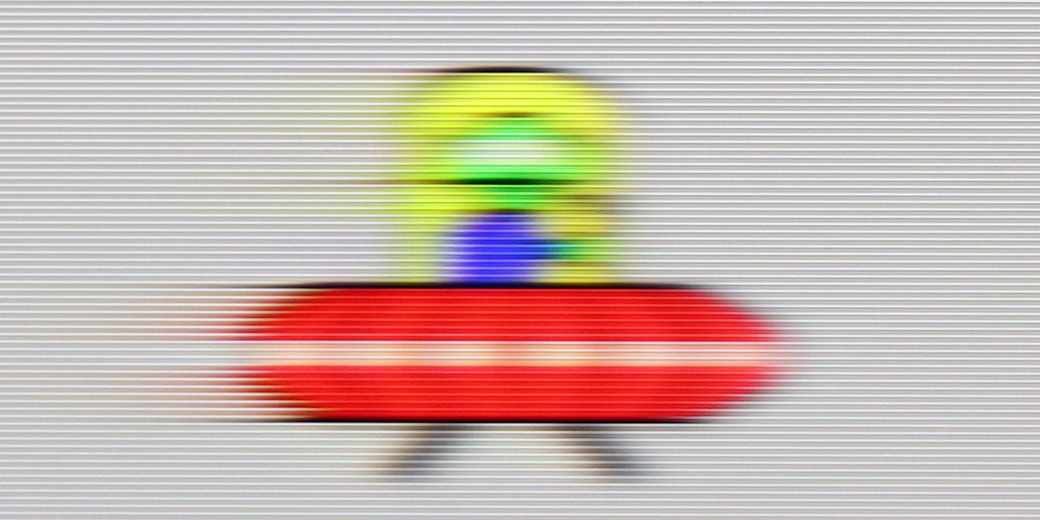
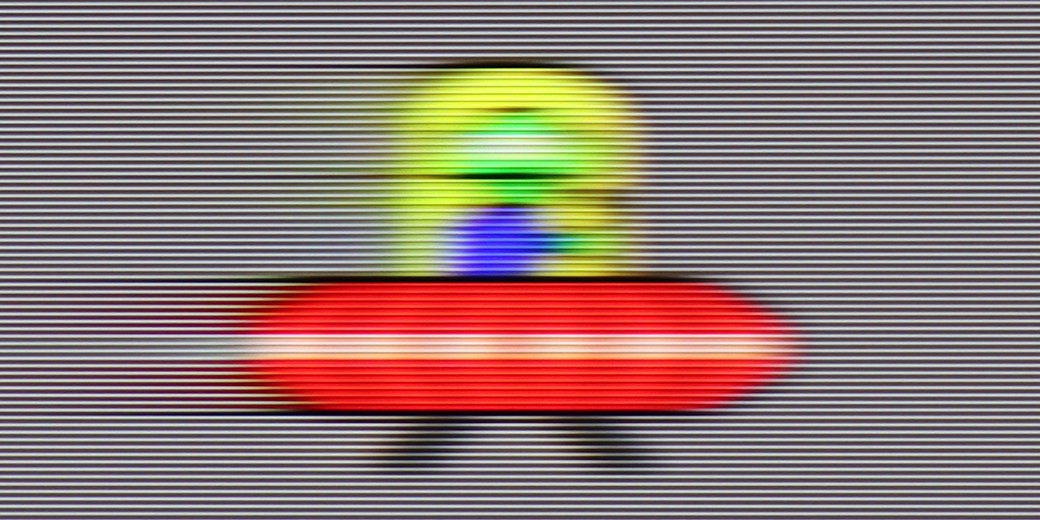
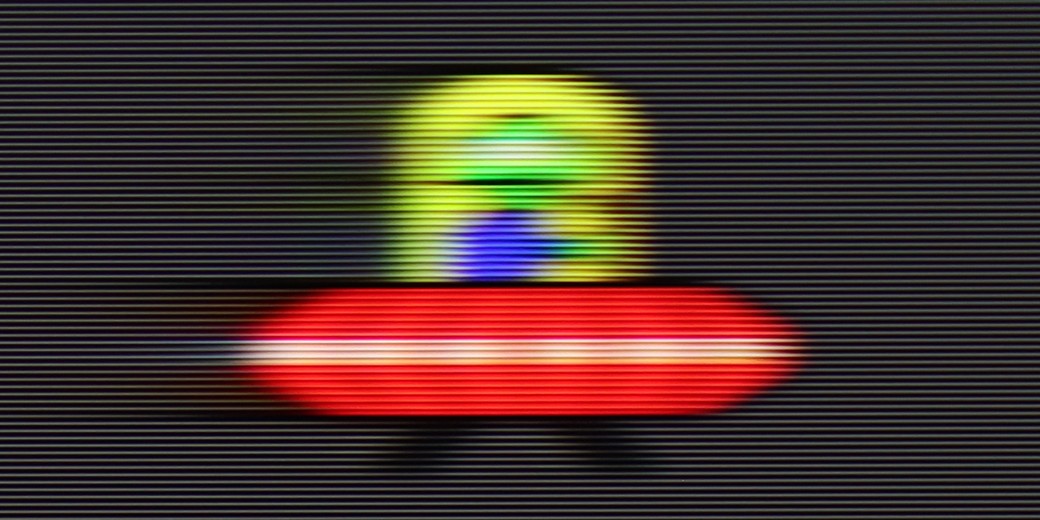
Blur (BFI function enabled):
Image flickers in this mode



Smużenie ():
Smużenie (4K 120Hz):
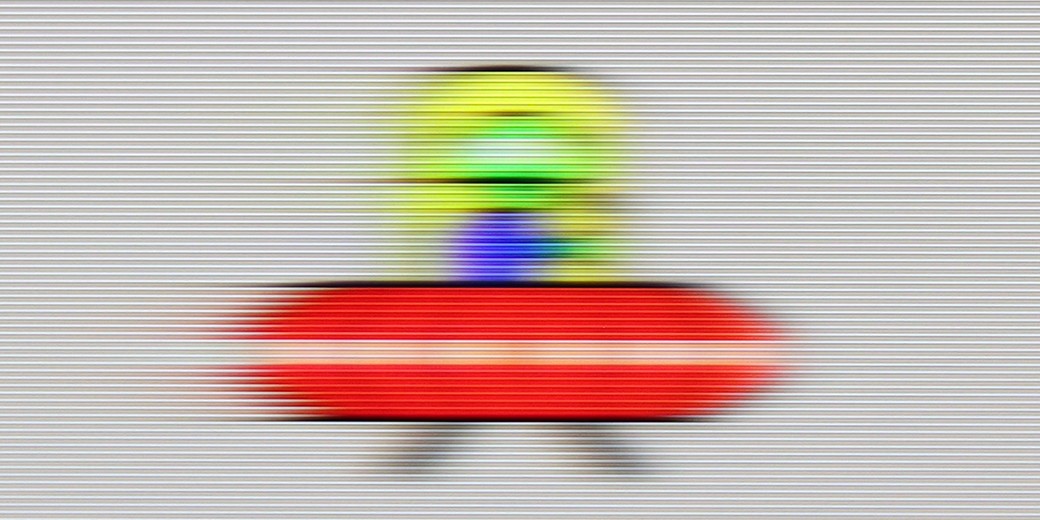
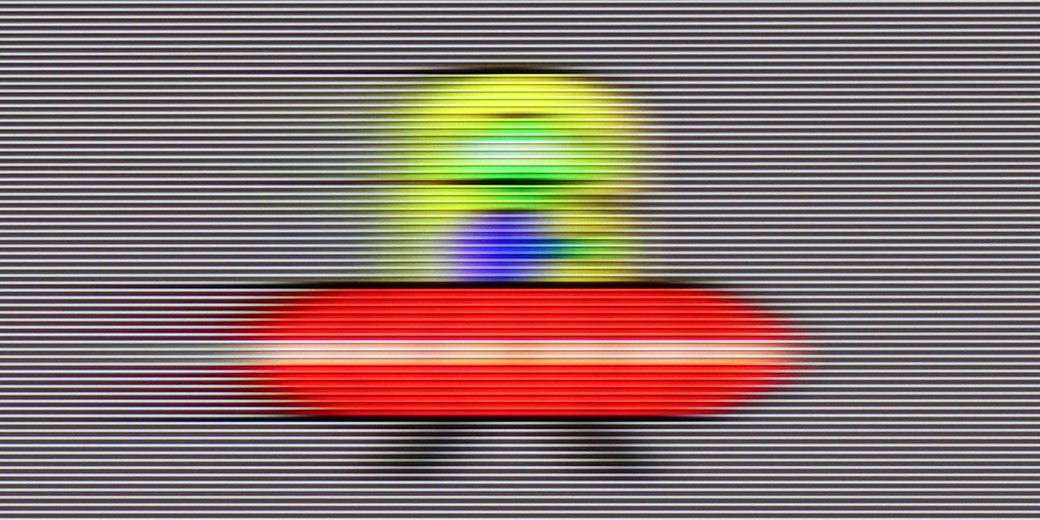
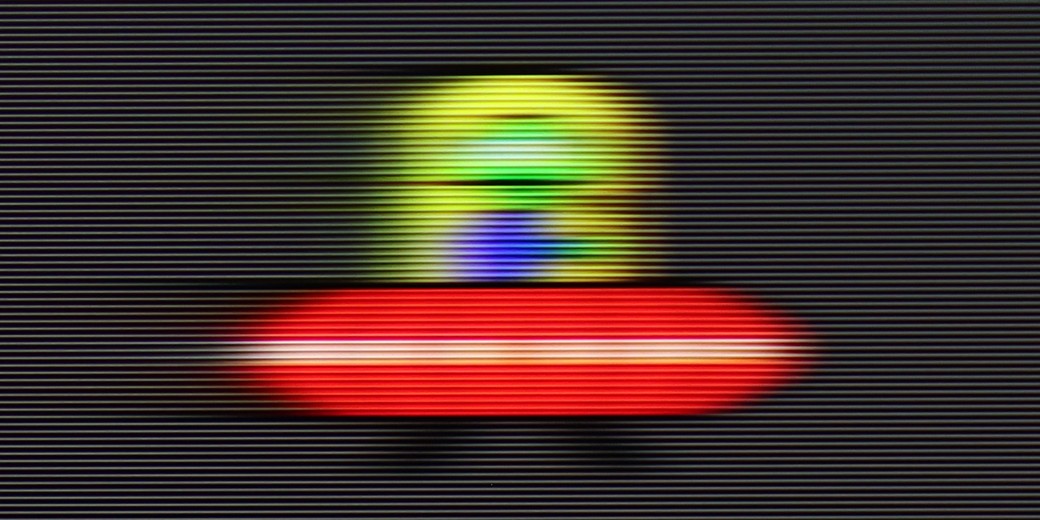
The S90D television is equipped with a 120 Hz panel, with the possibility of "overclocking" to 144 Hz with the appropriate PC configuration, ensuring exceptional motion fluidity. For years, Samsung has offered a variety of image sharpness settings on a ten-point scale, allowing users to customise the display to their preferences. In the UFO test, thanks to the use of an OLED panel, there is no sign of any blurring. The pixel response is instantaneous and perfectly captures dynamic movements. In this aspect, OLED technology is considered one of the best on the market. The image is incredibly sharp and detailed, even during fast action, making the S90D OLED 48 Samsung television an ideal choice for gamers and sports enthusiasts.
Similar to the U7Q, the E8Q model is a fast television designed for dynamic content. It supports a refresh rate of 144 Hz at 4K resolution, and if, for some reason, someone is still gaming in Full HD – it can even reach 240 Hz. This is a significant advantage, especially for PC users looking for maximum smoothness. In everyday use, the television performs very well. The "Ultra Motion Smoothness" mode offers two sliders that allow you to customise the picture to your preference – whether more cinematic with the film frame preserved or highly smoothed, almost "series-like". It's good that the manufacturer provides a choice here instead of imposing one style. On sports material, live broadcasts, or in games – movement looks clean and stable. Of course, it is not at the OLED level, but for this price range, the E8Q performs really well.
Console compatibility and gaming features
9.5/10
8.5/10
- ALLM
- VRR
- VRR range48 - 144Hz48 - 240Hz
- Dolby Vision Game Mode
- Correct implementation of HGIG
- 1080p@120Hz
- 1440p@120Hz
- 4K@120Hz
- Game bar



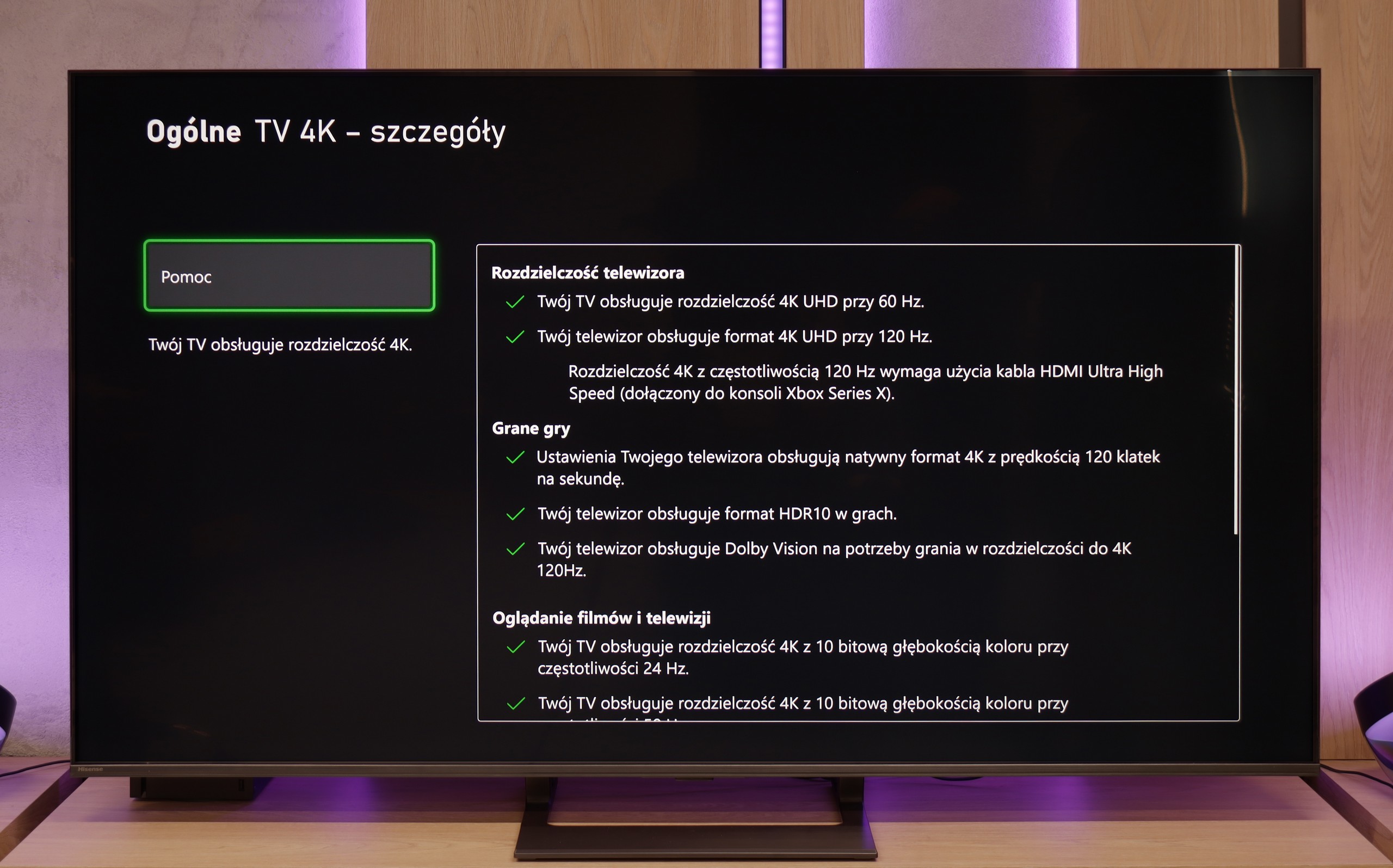

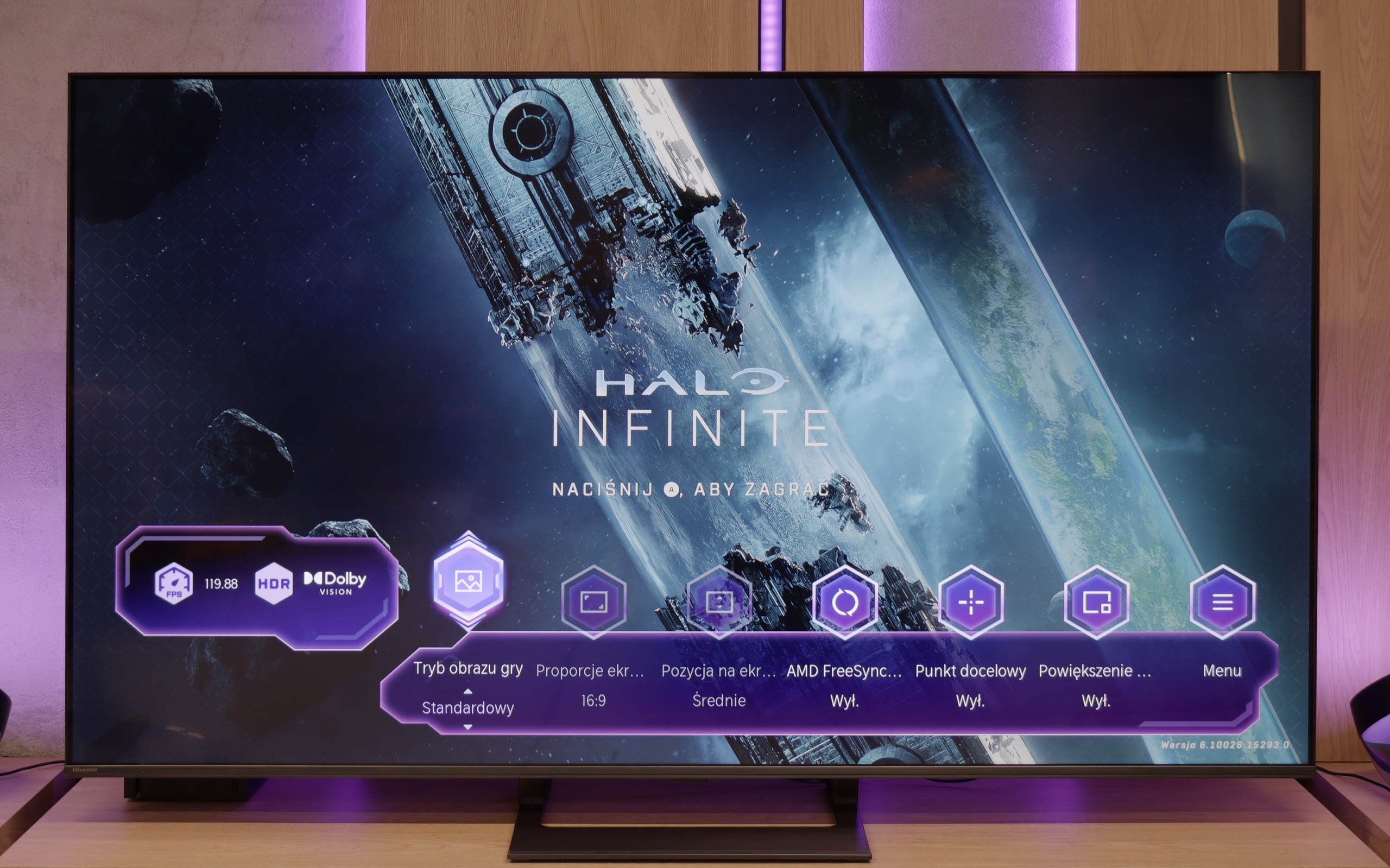


The Samsung OLED 48 S90D television is excellently tailored to the needs of gamers, offering four HDMI 2.1 ports that support features such as Auto Low Latency Mode (ALLM), Variable Refresh Rate (VRR), and HGIG (HDR Gaming Interest Group). With these technologies, gamers can enjoy smoother gameplay and faster screen responsiveness, significantly enhancing comfort during long gaming sessions. Additionally, the Game Bar feature allows for easy adjustments of settings such as screen ratios, which can be particularly useful in various types of games. For PC users, the television offers an impressive refresh rate of 144Hz, and Nvidia and AMD graphics cards support G-Sync and FreeSync, further improving image fluidity. Although the lack of Dolby Vision support may be a downside, it is worth noting that this technology is not as widely used in games as it is in films. Nevertheless, the S90D still offers excellent features for gamers, making it an outstanding choice for those seeking high-quality visuals and advanced gaming technologies.
Hisense E8Q does not hide its gaming heritage. Even the specifications reveal that we are dealing with a television that will perform excellently as a gaming screen. Variable Refresh Rate (VRR)? It's there. Automatic switching to game mode (ALLM)? That's there too. Additionally, there is impressive refresh rate – 120 Hz in 4K or even 240 Hz in Full HD. Such a set is rare in this price segment. Everything works smoothly and without major surprises. The only missing element – similar to the U7Q – is support for HGiG. It’s a shame, as this feature facilitates adjusting the brightness curve to the capabilities of a specific television, improving visual compatibility with the intentions of HDR game creators. Without it, one has to manually fiddle with the settings, which does not always yield a satisfactory result.
Input lag
10/10
9.7/10
SDR
HDR
Dolby Vision
Samsung's OLED features an exceptionally low input lag, regardless of resolution and frame rate, in both SDR and HDR modes. Results around 10 ms are truly impressive and significantly enhance the gaming experience. Such a low input lag ensures immediate responsiveness to on-screen actions, which is crucial in dynamic games where every millisecond counts. This allows users to enjoy fluidity and precision, making the S90D television an excellent choice for those prioritising gaming performance.
The E8Q handles delays very well. For 120 Hz materials, the input lag is super low – practically unnoticeable even for more demanding gamers. At 60 Hz, the values are slightly higher, but still comfortably within the "placebo" limit – there’s nothing to complain about. The biggest increase in delay was observed in Dolby Vision Gaming mode. The television then requires more time to process the signal, but even in this case, it doesn’t exceed 30 ms. While these may not be perfect values, for most gamers – especially console gamers – this will not be a hindrance.
Compatibility with PC
8.6/10
8.6/10


The Samsung OLED 48 S90D television works perfectly with a PC. Fonts are clearly visible, which makes reading text and using applications easier. Additionally, it supports 4:4:4 chroma at 4K resolution and a refresh rate of 144 Hz, ensuring full colour reproduction and image sharpness. It is worth highlighting that the input lag of just 5 ms is extremely beneficial, especially for gamers and professionals working with graphics. With such low latency, using the television as a monitor becomes a pleasure, allowing for comfortable and responsive work. The S90D television is an excellent choice for users seeking performance and quality in everyday computer use.
In terms of collaboration with the computer, the E8Q performs really well. It supports chroma 4:4:4 at full 4K resolution and at the highest refresh rate, so the readability of fonts – even the smallest ones – is at a very good level. There are some minor blurriness issues with exceptionally thin fonts, but in everyday use, this is hard to consider a serious problem. A nice addition for PC gamers is the ability to achieve up to 288 Hz at lower resolutions. The E8Q communicates effortlessly with powerful graphics cards, making it an interesting choice not only for movies or consoles but also for gaming on the computer.
Viewing angles
7.2/10
3/10
The viewing angles on the S90D television, thanks to OLED technology, are unparalleled. OLED offers excellent colour and contrast reproduction, even at wide viewing angles, which ensures that the image remains sharp and vibrant from almost any perspective. Users can enjoy a consistent visual experience, regardless of where they are viewing the screen.
E8Q, like most TVs with a VA panel, looks best when we sit directly in front of the screen. In this position, one can expect deep blacks, good colour saturation, and high contrast. Unfortunately, it only takes a slight shift to the side for the image quality to diminish – colours begin to fade, and blacks become more grey than black. This is not surprising, but it is worth keeping in mind, especially if we plan to watch with a larger group from different spots in the living room. As a consolation – in return, we get significantly better black levels than in IPS panels.
TV efficiency during daytime
5.4/10
6.2/10




Matrix brightness
Average luminance SDR
Hisense E8Q: 504 cd/m2
Samsung S90D / S94D 48" (WRGB OLED): 320 cd/m2
When watching during the day, the Samsung OLED 48 S90D performs well, achieving an average brightness of around 320 nits, which is a decent result for OLED technology in a 48-inch size. Thanks to the satin finish, reflection suppression is at an acceptable level, allowing for comfortable viewing even in bright rooms. The only noticeable downside to this technology, rather than the television itself, is the brightness at 100% white screen fill. In such conditions, OLED can struggle to achieve extremely high brightness. Such situations can be seen when we want to watch winter sports, for example, ski jumping.
Hisense E8Q is not afraid of bright interiors. Even if it is full sunlight outside, the television can maintain good image clarity. With a brightness level of around 500 nits, it is perfectly fine to watch content during the day without the feeling that everything is drowning in glare. The satin coating on the screen also helps to nicely suppress reflections – it does not eliminate them completely, but reduces them enough so they do not interfere with daily viewing.
Details about the matrix
Subpixel Structure:

Panel uniformity:

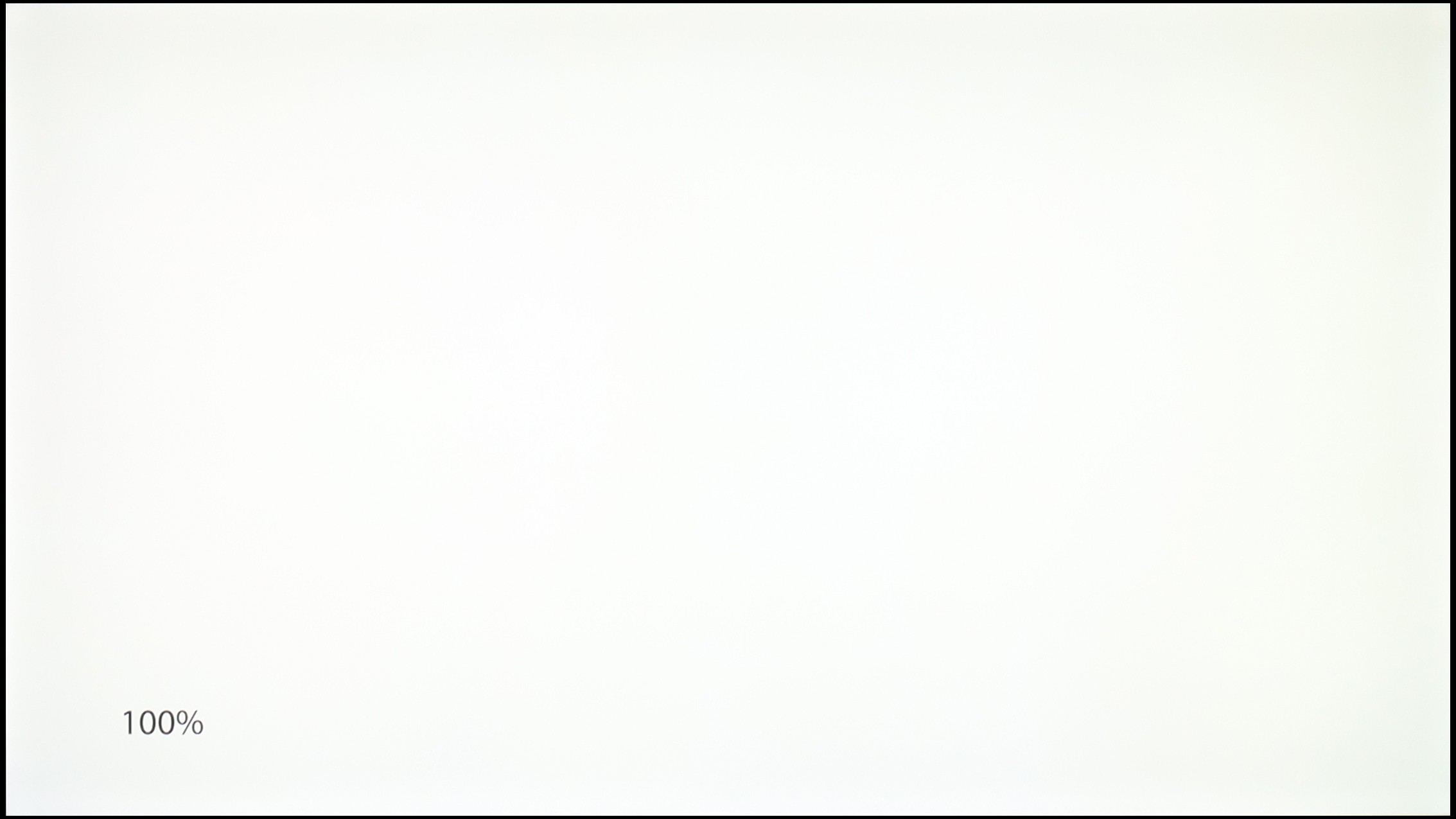
Samsung S90D / S94D 48" (WRGB OLED)
Hisense E8Q
TV features
7.7/10
8.9/10
- HDMI inputs0 x HDMI 2.0, 4 x HDMI 2.1 48Gbps2 x HDMI 2.0, 2 x HDMI 2.1 48Gbps
- Other inputsRCA (Chinch)
- OutputsToslink (Optical audio), eARC (HDMI), ARC (HDMI)Toslink (Optical audio), eARC (HDMI), ARC (HDMI), Mini-Jack (Headphones)
- Network InterfacesWi-Fi 2.4GHz, Wi-Fi 5GHz, Ethernet (LAN) 100MbpsWi-Fi 2.4GHz, Wi-Fi 5GHz, Ethernet (LAN) 100Mbps
- TV receptionDVB-T, DVB-T2, DVB-S, DVB-S2, DVB-CDVB-T, DVB-T2, DVB-S, DVB-S2, DVB-C
Classic features:
- Recording to USB (terrestrial TV)
- Recording programming
- Picture in Picture (PiP)
- RF remote control (no need to aim at the screen)
- Backlit remote control
- Teletext
- Audio only mode
- Possibility to connect Bluetooth headphones to the TV
- Possibility to simultaneously use Bluetooth headphones and the TV speaker
Smart features:
- AirPlay
- Screen mirroring (Windows Miracast)
- Wyszukiwanie głosowe
- Voice search in native language
- Ability to connect a keyboard and mouse


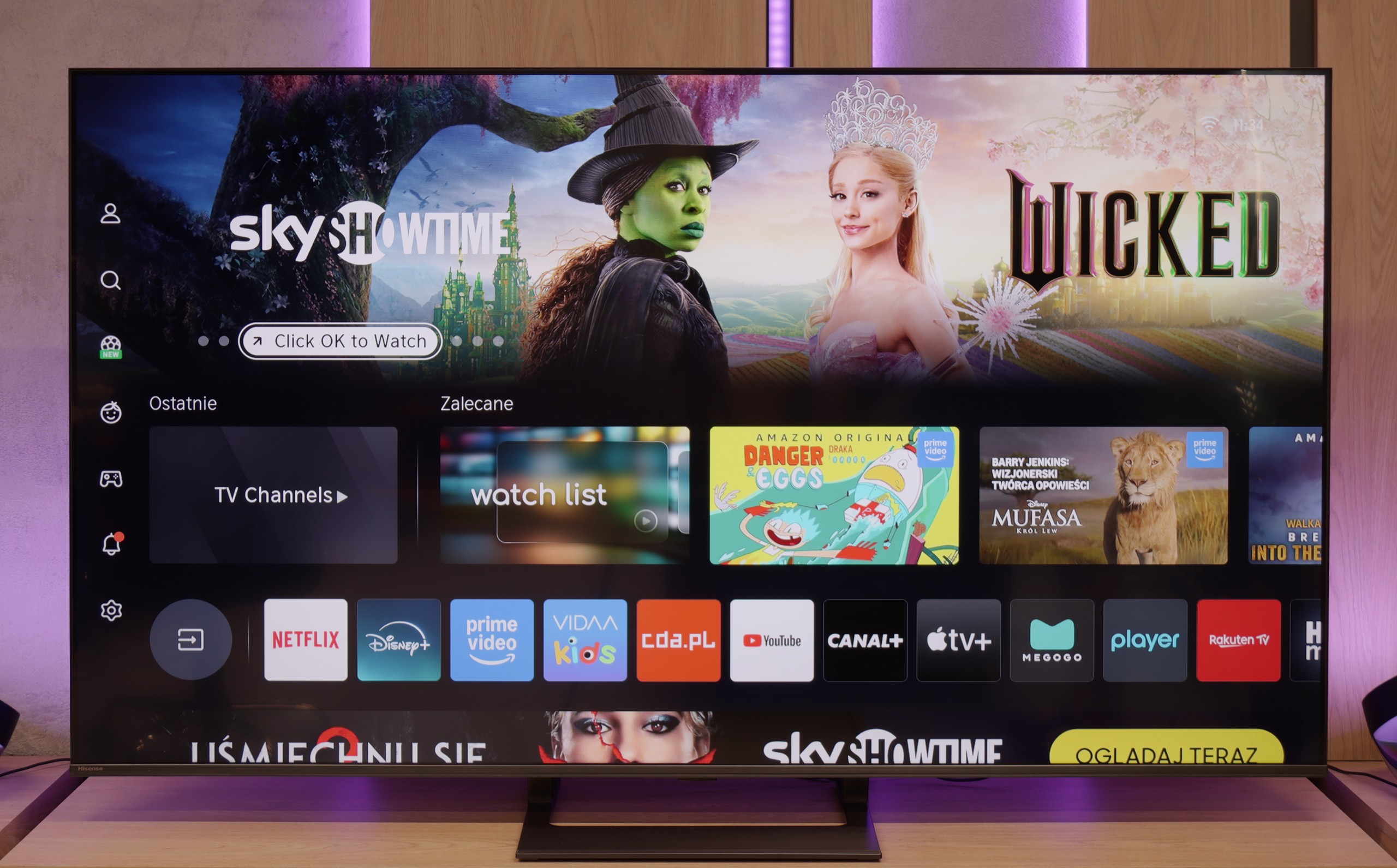
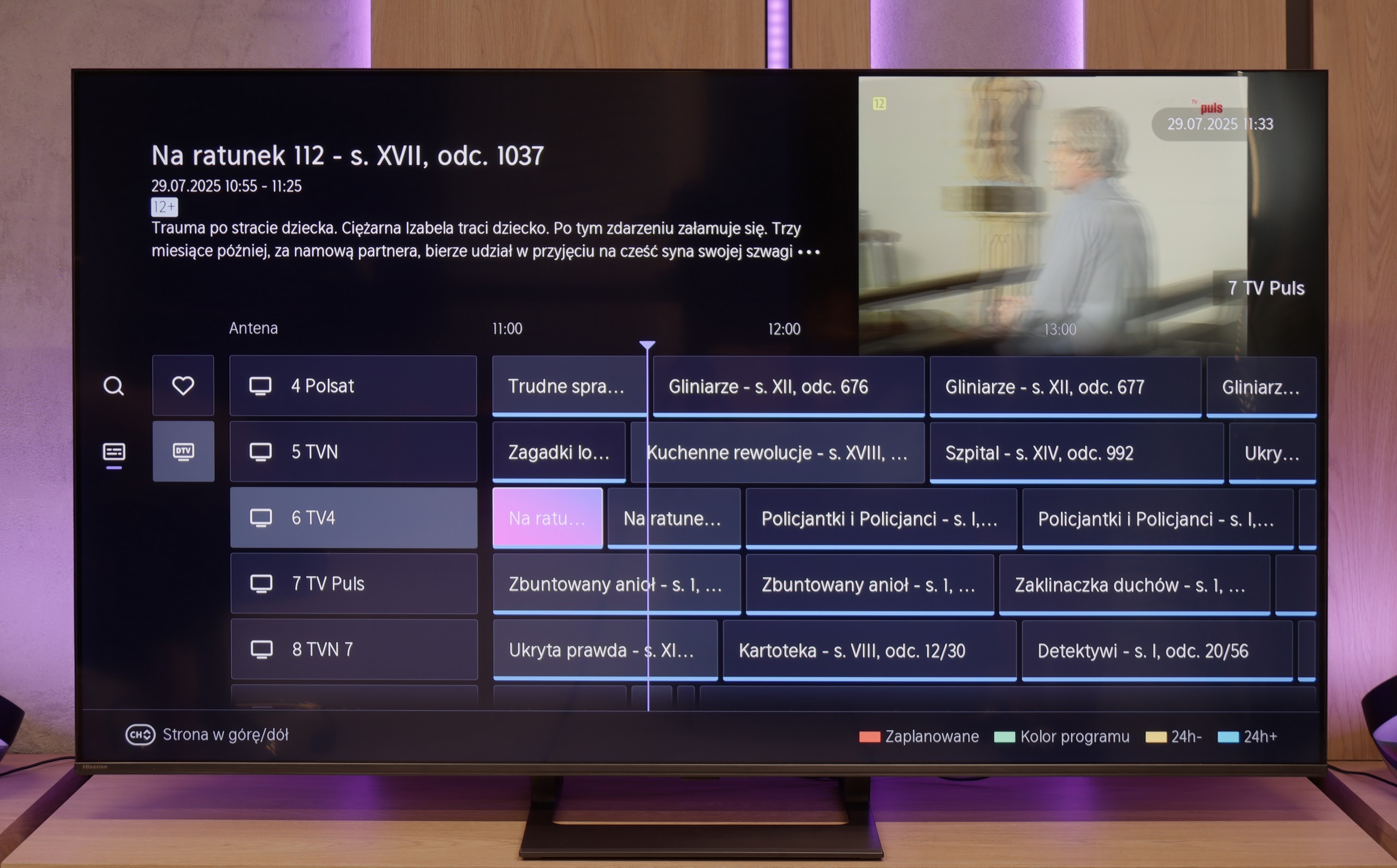


The Samsung OLED 48 S90D television offers a range of features that significantly enhance user comfort, making it the ideal device for entertainment in the comfort of your home. The Tizen system, on which this model is based, is a modern and advanced platform that provides users with an intuitive and smooth experience. With a user-friendly interface, navigation through applications and settings is quick and intuitive, making it easy for even less tech-savvy individuals to use the television. Tizen supports a rich set of applications, including all popular streaming services such as Netflix, YouTube, and Amazon Prime Video. A new feature for 2024 is the availability of voice search in Polish. It's also worth noting the eco-friendly solar remote, which is not only environmentally friendly but also practical for daily use. For example, the remote is capable of controlling multiple devices connected to the television, so there is no need to use multiple remotes. Additionally, the television supports AirPlay, allowing for easy content sharing from Apple devices such as iPhone or iPad. The S90D OLED 48 also allows for the connection of various Bluetooth devices, such as mice, keyboards, or headphones, which increases its versatility and enables user experience personalisation. This means that users can easily adjust their settings to make the most of the television's capabilities. The only downside that can be pointed out is the lack of USB recording support. For some users, this may be a limitation, especially for those wishing to archive their favourite shows or films. Despite this, the S90D television offers many advanced features and technologies, making it an excellent choice for anyone seeking high-quality entertainment in their home.
Classic Features – E8Q
The Hisense E8Q is not just equipment for gamers or movie enthusiasts – it can also serve as a daily television for the whole family. We can record programmes to USB, connect headphones or speakers via Bluetooth, and the entire interface – including the channel guide – is clear and easy to use. The only thing missing is the PiP function, but apart from that, the set of classic features is really comprehensive.
Smart TV – VIDAA System
The E8Q operates on the VIDAA system, which becomes more refined year after year. Voice search in Polish works flawlessly, and it's easy to stream content from your phone (AirPlay and screen mirroring). The system itself runs smoothly without hiccups, although – as is often the case with closed platforms – there may occasionally be one or two less popular apps missing. Therefore, it's worth checking before purchase whether everything we use on a daily basis is available there.
Playing files from USB
8.9/10
8.2/10
Supported photo formats:
Maximum photo resolution:

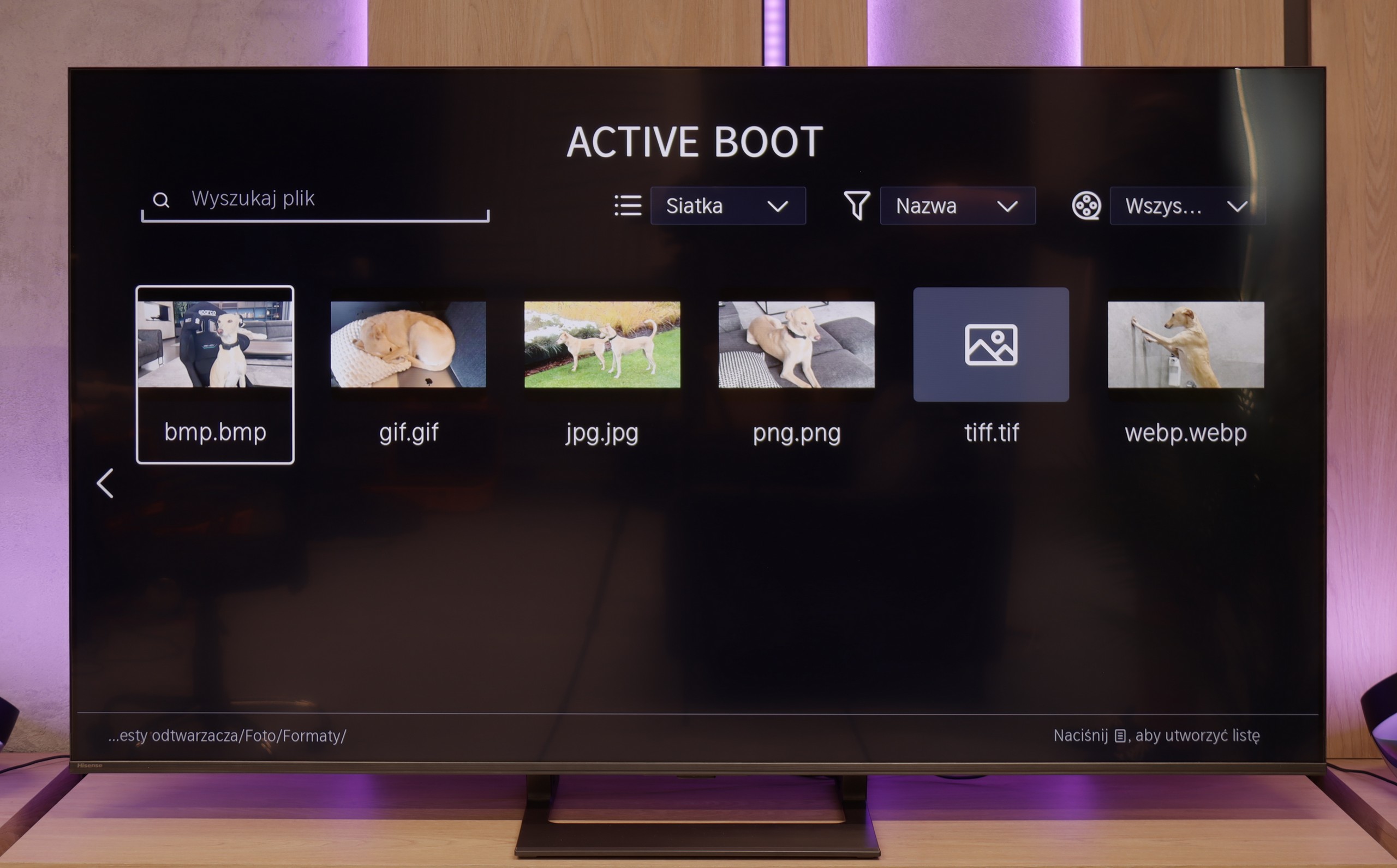
The Samsung S90D is equipped with a built-in player that supports most popular video formats, allowing for convenient playback of films from various sources. The player also supports subtitles in Polish and enables users to customise the font colour, increasing comfort when watching content with subtitles. In terms of photo formats, the television handles many of them; however, one of the few downsides is the lack of ability to play the popular PNG format. Nevertheless, the overall file playback capabilities of the S90D are at an excellent level.
The built-in media player in the E8Q performs quite well. It supports most popular video and audio formats, and files from USB drives or external disks play without any major issues. Polish characters? They are supported. Subtitles? They work. The only minor drawback is the occasional problem with displaying high-resolution photos – especially those from cameras or smartphones. So, if you plan to show holiday photos on the big screen, it’s worth checking beforehand whether they all load correctly from disk memory or a USB drive.
Apps
8.7/10
7.7/10














































Sound
6.8/10
5.5/10
- Subjective sound quality:6.8/105.5/10
- Dolby Digital Plus 7.1:
- Dolby True HD 7.1:
- Dolby Atmos in Dolby Digital Plus (JOC):
- Dolby Atmos in Dolby True HD:
- DTS:X in DTS-HD MA:
- DTS-HD Master Audio:
The Samsung OLED 48 S90D television provides good sound quality, with clear and balanced tones. The sound is clear, and the bass is well audible, which enhances the viewing experience. Even at the highest volume, the sound remains clear, although the television itself is not very loud.
Unfortunately, the Hisense E8Q did not make the best impression on us. Although on paper it has speakers with a power of 40 W (which is only slightly less than 50 W in the U7Q), in practice the difference is significant – and unfortunately not in favour of the E8Q. During testing, it quickly became apparent that something was amiss. When the volume was turned up above 40–50%, the entire back casing began to resonate, and unpleasant crackling sounds came from the TV. Even during regular viewing, it was hard not to notice this, and certainly – to not hear it. In this form, it is difficult to speak of listening comfort. We do not rule out that this was an issue with a specific test unit, but nonetheless – it is worth keeping this in mind. If you care about good sound, consider connecting a soundbar or… just go for the U7Q, which performs significantly better.


